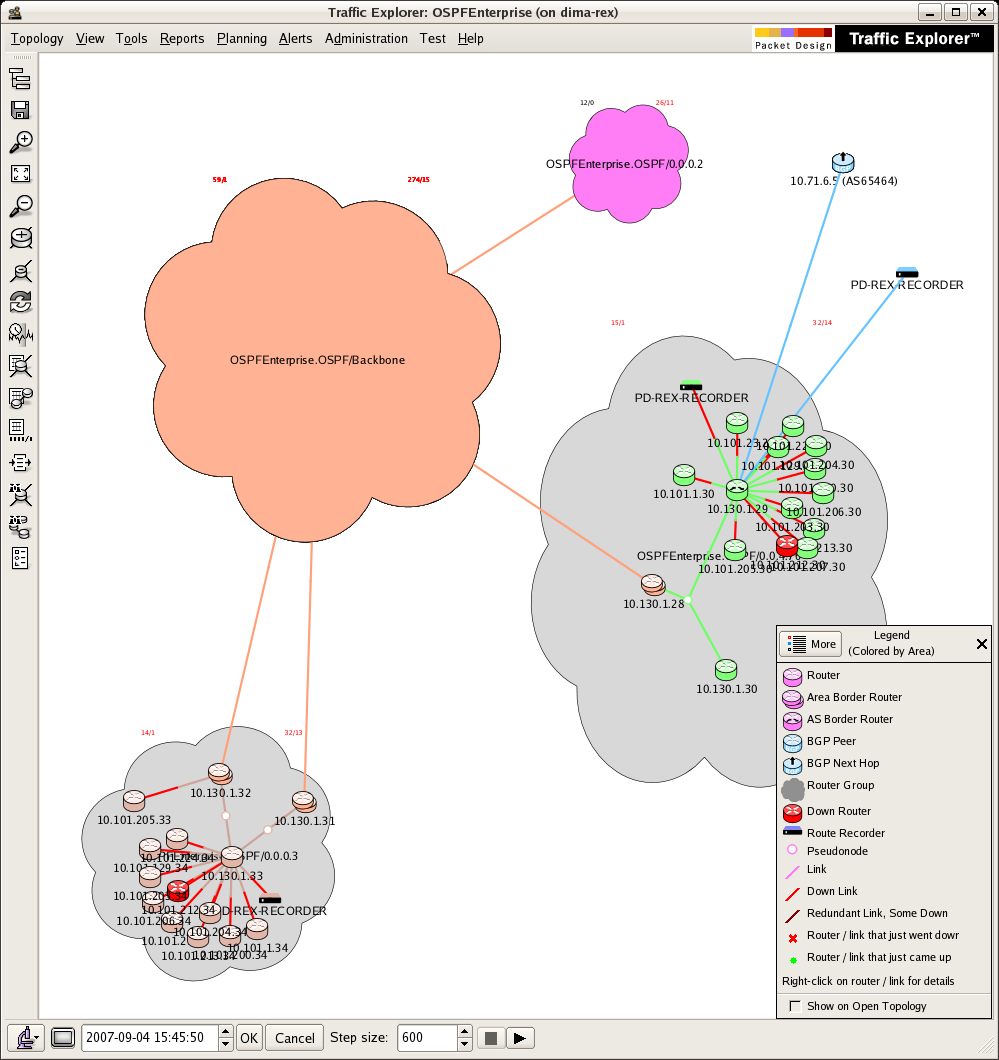Any solution whose primary role is to let network managers visualize network routing and traffic must have an outstanding user interface. That’s why Packet Design asked ICS to write one.
Santa Clara, CA-based Packet Design, Inc. develops and markets solutions that produce graphical multi-level representations of network topologies, routing information, and traffic flows. Using these tools, operators can effectively look into their IP network clouds. They can, for example, see IP routing changes as they occur and also highlight past routing events, such as flapping links, to isolate specific links or routers that may be causing problems.
These representations should be both complex and robust — comprised of potentially thousands of individual objects and occupying gigabytes of computer memory at once. But not only is performance critical — so is the appearance of the interface on customer’s desktops, says Costas Bassias, Packet Design’s Vice President of Engineering. “The visualization is very important to our value proposition, it is our face to the user. If that is not appealing, then the user has a bad experience.”
“We contacted ICS because we knew they have excellent expertise in Qt graphics programming based on QGraphicsView framework," states Bassias. “Previously, our interface was done in XLib, and efficient support of required new features — like router groups, complex animations, parallel links, distant views, etc. — based on legacy Xlib libraries was practically impossible."
So Packet Design asked ICS (Integrated Computer Solutions, Inc.) to help replace its legacy topology map interface, based on XLib, with a brand new implementation based on Qt, the cross-platform application library for desktop and embedded development. ICS is the largest source of independent expertise on the Qt framework, providing both expert consulting as well as training and add-on products.

A polished high-quality user interface is key to the success of Packet Design’s network visualization solution — in terms of functionality, performance and customer acceptance.
ICS contributed in three key areas: designing and developing a QGraphicsView-based topology map architecture, helping to build the bridge layer between the front and back ends, and optimizing the performance of map rendering.
Close Collaboration & Knowledge Transfer
“It was very satisfactory working with ICS,” Bassias says. “ICS was very professional and very cooperative in terms of the coordination with the rest of the team. And they did very good technical work, so we were very satisfied.”
Project success also required ICS to know how to integrate well with Packet Design despite differences in domain expertise — ICS in user interfaces and Packet Design in route analytics. An ICS engineer worked onsite day-to-day to ensure close collaboration and successful knowledge transfer. A key objective, Bassias states, was bringing QGraphicsView skills in-house so Packet Design could support the new framework after the project was finished.
“Our customers like it very much,” Bassias says. “Our business is growing about 70 to 80% this year and definitely part of the growth is because of the topology map built with help from ICS.”
And how do Packet Design’s customers like the new interface?